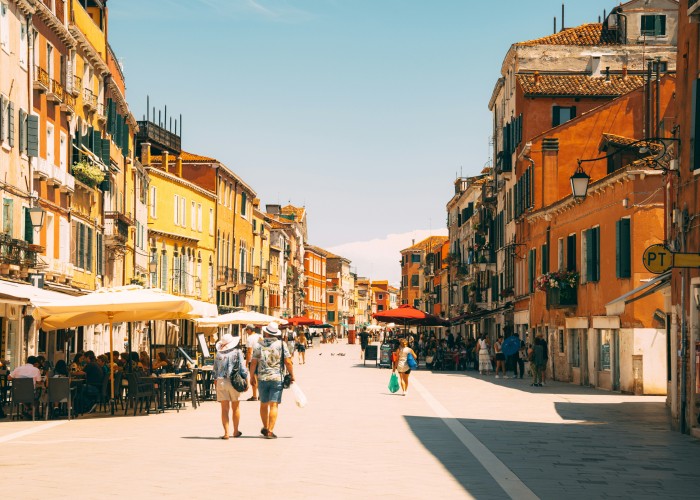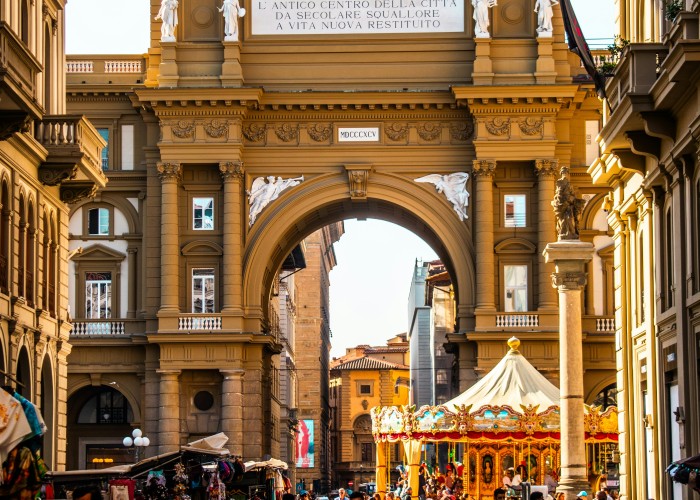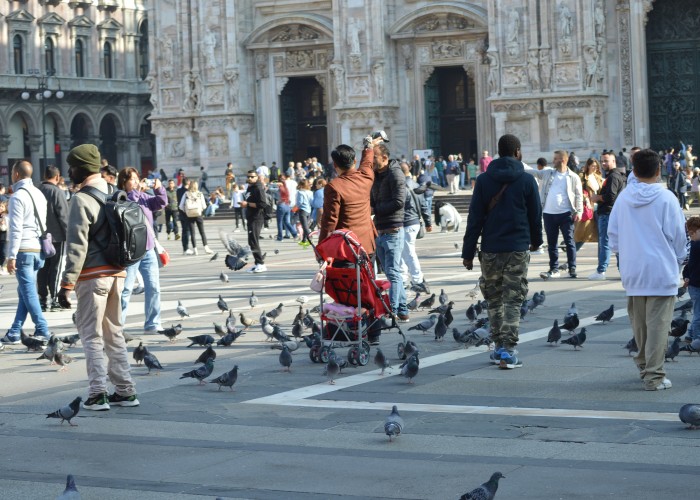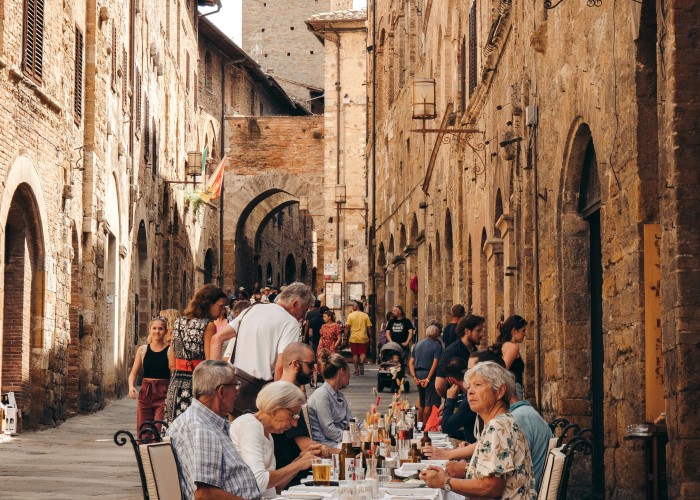Italy is one of the most captivating countries in the world, rich with history, art, food, and culture. But if you’re planning a trip through Italy and don’t speak a word of Italian, you might be wondering—can you still get around easily? The good news is yes, you absolutely can. Getting Around Italy Without Speaking Italian .
English is commonly spoken in major cities and tourist areas, and with a little preparation, getting around becomes not only manageable but enjoyable. This guide will walk you through how to navigate Italy’s transportation, restaurants, and daily interactions, even if you don’t speak Italian.
This blog is a resource by Tours Through Italy, where we share helpful travel advice for exploring Italy and other destinations. We do not sell tour packages, but we do offer plenty of useful content on the Tours Through Italy blog and introduce ourselves on the
Let’s dive into what every non-Italian speaker should know before stepping into this beautiful country.
Is English Spoken Widely in Italy?
English is not an official language in Italy, but it is commonly spoken in:
- Major cities like Rome, Florence, Milan, and Venice
- Hotels, airports, and train stations
- Tourist attractions and museums
- Some restaurants and shops in popular areas
However, as you move into smaller towns or rural regions, English becomes less common. This is where knowing a few key phrases—or using translation tools—can be helpful.
If you’re planning your travels through rome italy tours, italy tour package, or independent trip through Italy, understanding this language dynamic will help you feel more prepared.
Getting Around with Limited Italian: Is It Really Possible?
Absolutely. Italy has a well-developed transport system and signage is often bilingual, especially in tourist zones. Even if you don’t speak Italian fluently—or at all—you’ll be able to get where you need to go. Here’s how.
1. Using Public Transportation
Trains and Stations
Italy’s rail network is one of the most efficient ways to travel between cities. Major train stations have signage in both Italian and English, and ticket machines typically offer language selection.
Helpful Tips:
- Know the Italian names of cities. For example, Rome is “Roma,” Florence is “Firenze.”
- Use apps like Trenitalia or Italo to book tickets in English.
- Validate regional train tickets at the station before boarding.
Whether you’re hopping between stops on italy trip packages or following your own itinerary, trains are traveler-friendly even without Italian fluency.
Metro and Bus Systems
In cities like Rome and Milan, metros and buses are easy to navigate.
- Metro maps are color-coded and display station names clearly.
- Buses display their route number and direction.
- You can use apps like Moovit or Google Maps to plan your route.
Even if announcements are made in Italian, the visual cues are usually enough to help you get off at the right stop.
2. Navigating Airports
Airports in Italy cater to international travelers. Staff at customs, information desks, and gates typically speak English. Getting Around Italy Without Speaking Italian .
At the airport:
- Baggage claims and terminals are marked in both Italian and English.
- Use self-check-in machines that have multiple language options.
- You can always ask for help using simple English phrases.
3. Asking for Directions
If you’re lost or need directions, many Italians will try to help—even if their English is basic.
Tips:
- Start by saying “Parla inglese?” (Do you speak English?)
- Use hand gestures and show names or maps on your phone.
- Be polite and patient, and most people will assist you with a smile.
In cities that are part of rome tours packages or italy package holidays, locals are used to helping tourists.
4. Dining Without Italian
Menus in tourist-friendly areas often have English translations or pictures. If not, you can always:
- Use translation apps like Google Translate’s camera feature
- Ask the waiter, “Do you have an English menu?”
- Learn basic food-related words like “acqua” (water), “vino” (wine), “pollo” (chicken), “manzo” (beef)
Pro tip: Restaurants in smaller towns might not have English menus, so knowing a few dish names or ingredients can be helpful.
5. Shopping and Payments
In stores, many staff speak at least a little English, especially in tourist zones or large cities.
- Most prices are marked visibly, and cash registers show totals digitally.
- Credit cards are widely accepted.
- You can ask simple questions like “How much is this?” or just point and gesture.
Exploring markets or shopping for souvenirs as part of your italian vacation packages is very doable even with no Italian.
6. Staying Connected with Translation Tools
When language becomes a barrier, technology can step in. Some tools that can make a big difference:
- Google Translate: Excellent for typing or speaking phrases and translating signs or menus.
- Phrasebook Apps: Learn useful phrases like “Where is the bathroom?” or “I need help.”
- Offline Maps: Maps.me and Google Maps offline versions help when there’s no internet.
Download essential apps before your trip to stay ready for any situation during your tour of italy vacation package.
7. Helpful Italian Phrases to Know
Even if you don’t plan to speak Italian, learning a few polite phrases can go a long way:
- Buongiorno – Good morning
- Buonasera – Good evening
- Per favore – Please
- Grazie – Thank you
- Mi scusi – Excuse me
- Dove si trova…? – Where is…?
- Quanto costa? – How much does it cost?
Using just a few words will often be met with appreciation and friendliness from locals. Getting Around Italy Without Speaking Italian .
8. Cultural Etiquette and Communication
Italians are expressive, warm, and used to communicating with gestures. If you’re friendly and respectful, you’ll likely have positive interactions.
- A smile and “grazie” go a long way.
- Don’t worry about perfect pronunciation—effort is appreciated.
- If someone doesn’t speak English, they might point you to someone who does.
Even as a non-speaker, being open and respectful helps you connect during your trip through Italy.
9. Planning Helps Reduce Stress
To make travel smoother:
- Print hotel confirmations with the address in Italian.
- Screenshot or write down directions in case your phone dies.
- Book transportation and tickets in advance when possible.
While best italy tour packages may include guides who speak English, even self-guided travelers can move around confidently with some smart planning.
Is a Language Barrier a Dealbreaker for Italy?
Absolutely not. Italy is a welcoming country, and tourists from around the world visit every day without knowing Italian. In major destinations, infrastructure is designed to help you navigate, order food, book tickets, and enjoy your stay.
With simple tools, polite phrases, and an open mind, you’ll discover that language is rarely a roadblock. It might even become part of the adventure.
So whether you’re planning a casual weekend escape or a full rome package holiday, don’t let language worries hold you back. Travel smart, stay prepared, and let Italy surprise you.
Final Thoughts
Traveling through Italy without speaking Italian is not only possible—it’s incredibly rewarding. From bustling cities to quiet countryside villages, you’ll find that most people are friendly, helpful, and used to tourists.
Thanks to modern apps, multilingual signage, and your own curiosity, you’ll be able to navigate confidently, enjoy delicious meals, and soak up the culture—all without needing to master Italian.
For more guides like this, head over to the Tours Through Italy blog or learn more about our mission on the about page. We’re here to help you explore Italy with ease and confidence. Getting Around Italy Without Speaking Italian .






Leave a Reply